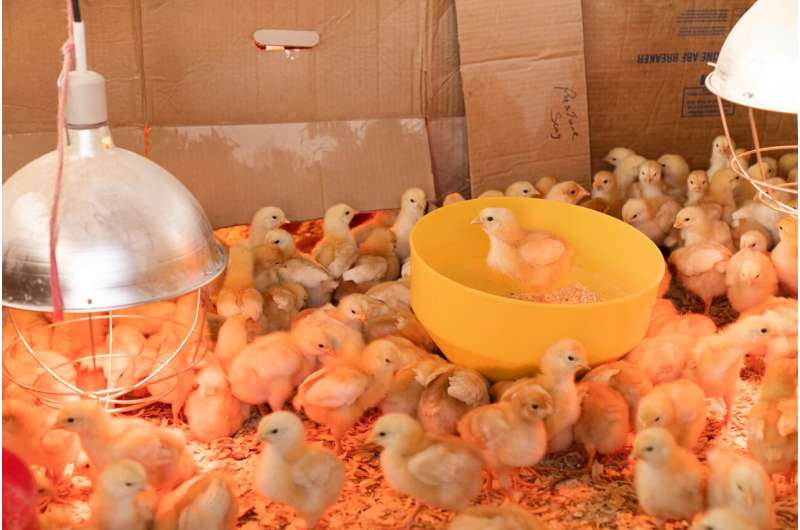Credit: Unsplash/CC0 Public Domain
A team of researchers from the City University of Hong Kong, working with several colleagues from the U.K., has modified an AI application for use in detecting chick distress calls in noisy environments. In their paper published in Journal of the Royal Society Interface, the group describes the modifications they made to a commercially available AI application and how well it worked when tested on a working poultry farm.
As the world's global human population grows, farmers seek ways to improve efficiency. In this new effort, the researchers tested the idea of using artificial intelligence to identify and locate chicks in distress housed in very large buildings.
Large commercial poultry farms typically house thousands of animals in large, airplane hangar–sized buildings. While this makes it easier to grow and process animals such as chickens, it also makes it difficult to distinguish animals that need individual attention. Prior research has shown that animals tend to make known their needs by issuing calls. A chick that gets its foot caught in a cage bottom, for example, will begin chirping in a way that its mother would recognize as a call for assistance. But such chirps are difficult to hear and isolate in a large building full of other chicks.
The work on this new effort involved tweaking the commercially available novel convolutional-neural-network-based model called light-VGG11 to remove some of the unnecessary components and to add some geared specifically toward recognizing baby chick distress calls. They trained the system to recognize such calls using 3,363 recorded distress calls and 1,973 normal calls as a means of comparison. They then tested the system by setting up microphones in a barn housing thousands of live chicks. They found the system to be nearly 97% accurate in picking out the calls of distressed chicks.
The researchers plan to tweak their system before making it available for commercial use. They note that in addition to providing assistance to chicks needing help, their system could also be used to isolate problem areas and to reduce instances of chick distress.
More information: Axiu Mao et al, Automated identification of chicken distress vocalizations using deep learning models, Journal of The Royal Society Interface (2022). DOI: 10.1098/rsif.2021.0921
Journal information: Journal of the Royal Society Interface
© 2022 Science X Network























